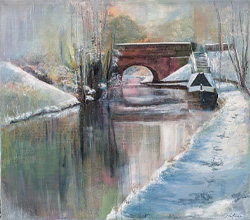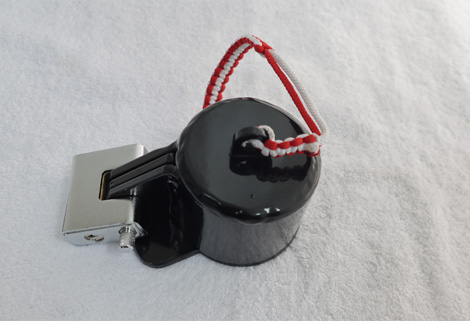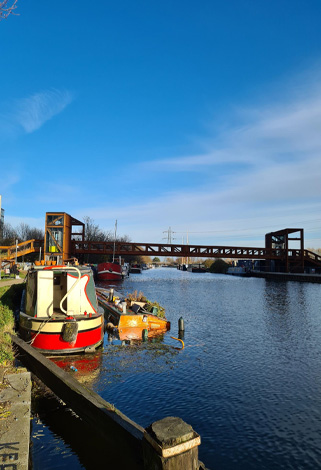featured roving canal trader
Jan Vallance - The Art Boat
I suppose I was always going to end up on the canals. I just didn’t know it. When I was young, I used to play near the canal, and it was the route I took when walking to visit friends. The canal has always fascinated me. I even remember riding my bike along the frozen Peak Forest Canal one year to see a friend.
My mum’s house backs on to the canal so back in 2010 when I was looking for somewhere to live with my children after selling our house, she suggested a boat at the bottom of the garden. I needed no persuading. That was where I moored for the first few years. Nowadays, children having flown the nest, I continuously cruise.


I have lived on my boat for around 14 years now. I travel much more during the spring and summer as that’s when the festivals and floating markets are. In the winter I tend to stay in a smaller area, generally the North West to be nearer family. My boat is my home, studio and gallery.
I love the winter on my boat especially when it snows. It’s really magical then and snow scenes are one of my favourite subjects to paint.
I never feel lonely. In the spring and summer, I often travel with others who are heading to the same market or festival. I might spend a couple of weeks with another boat and then not see them again for a few months as they’re on a different route. Lots of hellos and goodbyes, but I love it. Last year I travelled from the Llangollen canal through Yorkshire with the Hippie Boat for the whole season, that was a fabulous experience. The Yorkshire canals had not been on my radar before then. I’ll definitely be going back for another dose of those inspiring canalscapes.
Three years ago I was joined by Lily. A lovely little rescue dog from Macedonia. It took her a while to settle, but she is becoming the perfect studio and boat dog. She encourages me to get out and explore the areas where I moor.


I started painting canal scenes 10 years ago, around the same time I got my trading licence and joined the RTCA. Before that, my subjects and styles changed quite frequently. When I began painting the canals and waterways, I didn’t expect to still be doing it now, but I’m hooked. The canals wind through cities and countryside, forming beautiful green corridors or industrial landscapes. With the changing seasons, diverse wildlife, and the people who use the canals, the opportunities for paintings are endless.
Getting my trading licence changed everything. I was suddenly presented with a means to sell my work and be inspired be the changing seasons and locations while I was doing so. How many artists get to travel and sell their art in person? I still can’t believe how lucky I am to have found this way of life.

Two of my paintings - a snowy canal scene and the Pontcysyllte Aqueduct on the Llangollen Canal.

I’m a member of The Guild of Waterway Artists. The Guild is a collective of artists who specialise in capturing the beauty and essence of the UK's inland waterways. Established in the 1980’s, the guild aims to promote and exhibit artwork inspired by canals, rivers, and other inland waterways. I’ll be exhibiting with other Guild artists at Braunston Historic Boat Rally at the end of June.
I sometimes get asked why I don’t have any artwork actually painted on my boat. I do occasionally think it would be nice if my art spilled over into my boat’s exterior and interior, but I have never really been someone who needs to be in a beautiful space. I wake up thinking about paintings and making them, but don’t feel an urge to decorate the place I work in with my art. That doesn’t mean I don’t care about the space I work in, but I can turn any room into a workspace. I become oblivious to my surroundings when I’m working. Places for me become somewhere to create, and I leave a trail of finished and unfinished projects everywhere I go.
I like the fact that my artwork is only temporarily mine. I become very attached to a piece during the painting process, but then once it is finished it goes on to be someone else’s story. I like to think that people can make an emotional connection with my art, whether it evokes a memory of a place or a particular feeling. Many of my paintings reflect my journey on The Art Boat, but I hope that for anyone viewing the scene, it becomes their journey too.

I trade as The Art Boat. You can view my work on my website, or in person by visiting my events page and finding out where I will be. This year I am extremely excited to be taking part in Brinklow Marina’s first Arts Week from Saturday 13th-Sunday 21st July.




































